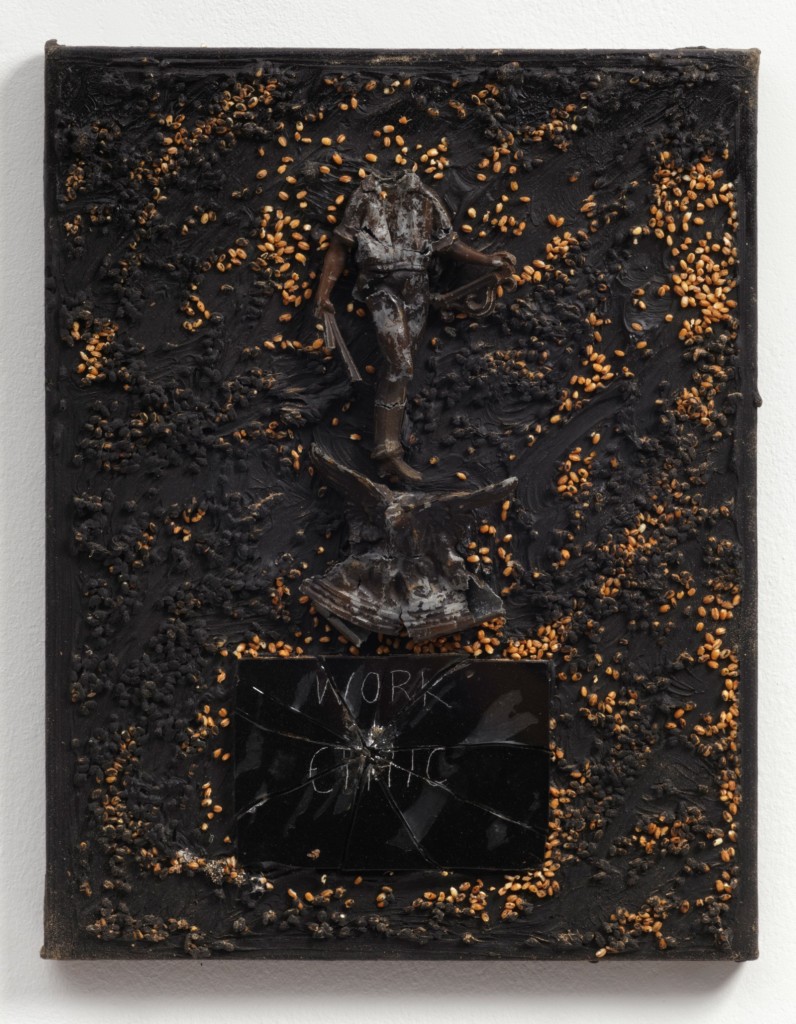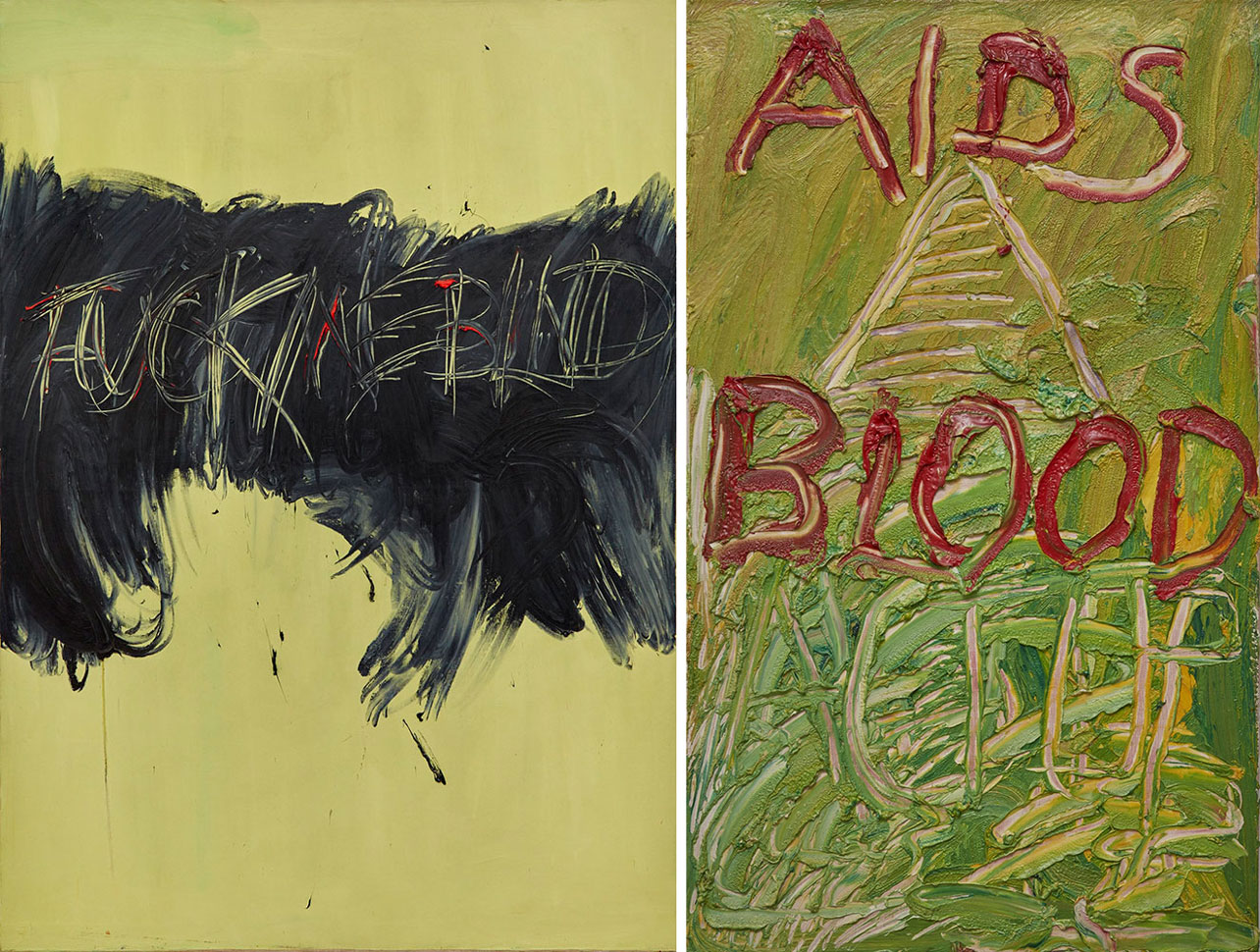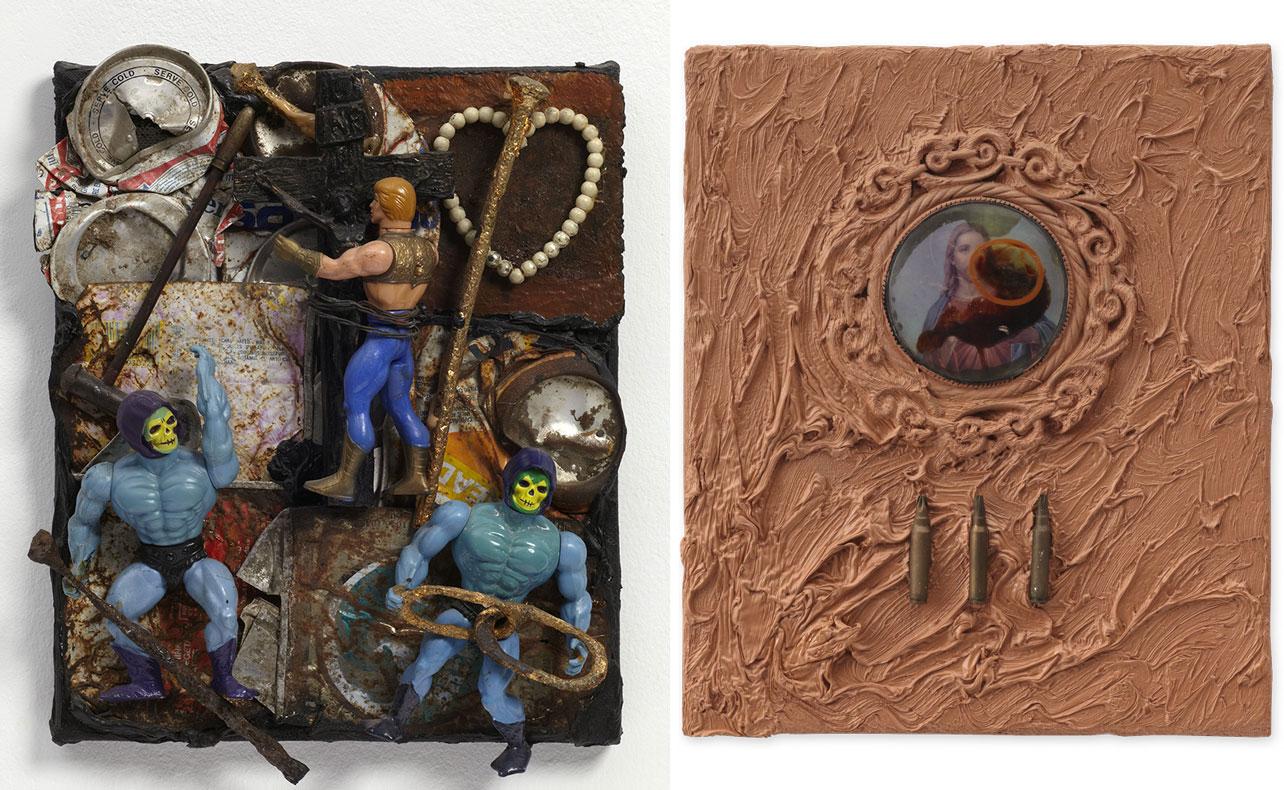ART CITIES:Dublin-Derek Jarman
 Derek Jarman (1942-94) was an English film director, stage designer, diarist, artist, gardener, political activist and author. He was educated at the University of London and at the Slade School of Art Derek Jarman crafted highly personal avant-garde motion pictures through which he sought to “demystify homosexuality” and explore human experience from a uniquely gay perspective.
Derek Jarman (1942-94) was an English film director, stage designer, diarist, artist, gardener, political activist and author. He was educated at the University of London and at the Slade School of Art Derek Jarman crafted highly personal avant-garde motion pictures through which he sought to “demystify homosexuality” and explore human experience from a uniquely gay perspective.
By Dimitris Lempesis
Photo: IMMA Archive

With over 150 works in diverse media, dating from 1958 to 1993, the retrospective “PROTEST!” at IMMA (Irish Museum of Modern Art) while addressing Derek Jarman’s important contribution to film, focus on his wider practice and captures Jarman’s engagement with both art and society, as well as concerns arising from the AIDS crisis. Derek Jarman studied at the Slade School of Art, London in the early 60s, and was part of a group of young painters, including Patrick Procter and David Hockney, who embodied a changing mood in British art. More than 80 early works have been identified from the period 1958 to 1970, and some 30 of these are previously unknown and have been catalogued, conserved and documented for this exhibition. As early as 1967 Jarman was hired to produce design sets such as “Jazz Calendar” by Frederick Ashton at the Royal Ballet; and in 1971 the set for Ken Russell’s “The Devils”. The exhibition includes many original designs by Jarman; photographs of the realised sets and a group of seven costumes designed by Oscar-winning costume designer Sandy Powell. In 1976 he produced his first full length feature film “Sebastiane”, (co-d. Paul Humfress, 1976), a story about the martyrdom of St. Sebastian, which created a stir on the art cinema market because of its overt depiction of homosexual desire. Its implications as “camp” were further enhanced by its dialogue being in Latin. Against the backdrop of Thatcherism and a socially conservative Britain, Jarman’s work made queer lives and history visible; a provocation to the dominant hierarchies. Jarman’s next venture, “Jubilee” (1977), was fiercely anti-Establishment in its post-punk vision of a social wasteland, depicting the occasion of Queen Elizabeth II’s 25th year on the throne, partly through the eyes of Queen Elizabeth I and her astrologer magician John Dee, a typical Jarman anachronism. This use of the anachronistic was further employed in his bold adaptation of Shakespeare’s “The Tempest” (1979). Caravaggio’s life and art were a source of inspiration. Over a period of more than ten years Jarman made paintings using techniques borrowed from the Renaissance master. Making a feature film on Caravaggio’s life became an obsession. This research led to the creation of volumes of sketchbooks, storyboards, and paintings. Following the release of the film “Caravaggio” in 1986, he was nominated for the Turner Prize that year. At the end of 1986 Jarman was diagnosed as HIV-positive. AIDS was then a fatal, non-treatable disease which the tabloid press described as a plague. This diagnosis transformed Jarman’s practice and led to a new kind of activism as he worked to raise awareness of AIDS. This is expressed in his paintings such as “Queer” (1992), from his expansive series of “Slogan Paintings”. These monumental works, from the early 1990s, incorporating phrases related to government policy, tabloid hysteria and public fear of the AIDS crisis remain powerful comments on the socio-political climate of the time. Jarman’s diagnosis coincided with a move to Prospect Cottage in Dungeness, Kent, which is over shadowed by the Dungeness nuclear power station. Here he created a unique and highly-regarded garden, the site of his film “The Garden” (1990) and book “Derek Jarman’s Garden” (1995). In Derek Jarman’s last film “Blue”, the monochrome glow of the projected frame echoes the artist’s fading eyesight, as the soundtrack evokes powerful images of the mental, physical and emotional strain caused by his terminal illness. “Blue” was completed in 1993, the year before Jarman succumbed to AIDS-related complications. In 1974, after seeing the monochrome painting “IKB 79” (1959) by Yves Klein at the Tate gallery, Jarman was inspired to make a “blue film” dedicated to the French artist. Indeed, the single frame used in the film was initially a photograph of Klein’s work, painted using an ultramarine pigment solution he patented as “International Klein Blue” Klein chose this vibrant hue to express his idea of art as a rarefied sensorial experience, transcending reality to reach an immaterial, spiritual beyond. The script, recited by actors and by Jarman himself, alternates poetry and narrative prose around different meanings and interpretations of the color blue (melancholy, water, infinity, etc.), autobiographical episodes and invocations to a character called Blue. The soundtrack by Simon Fisher-Turner includes choral singing, time-marking sounds like ticking clocks, chimes and gongs, as well as music by Brian Eno, Coil and Erik Satie among others.
Info: IMMA (Irish Museum of Modern Art), Kilmainham, Royal Hospital, Military Road, Dublin, Duration: 15/11/19-2382/20, Days & Hours: Tue-Fri 11:30-17:30, Sat 10:00-17:30, Sun 12:00-17:30, https://imma.ie



